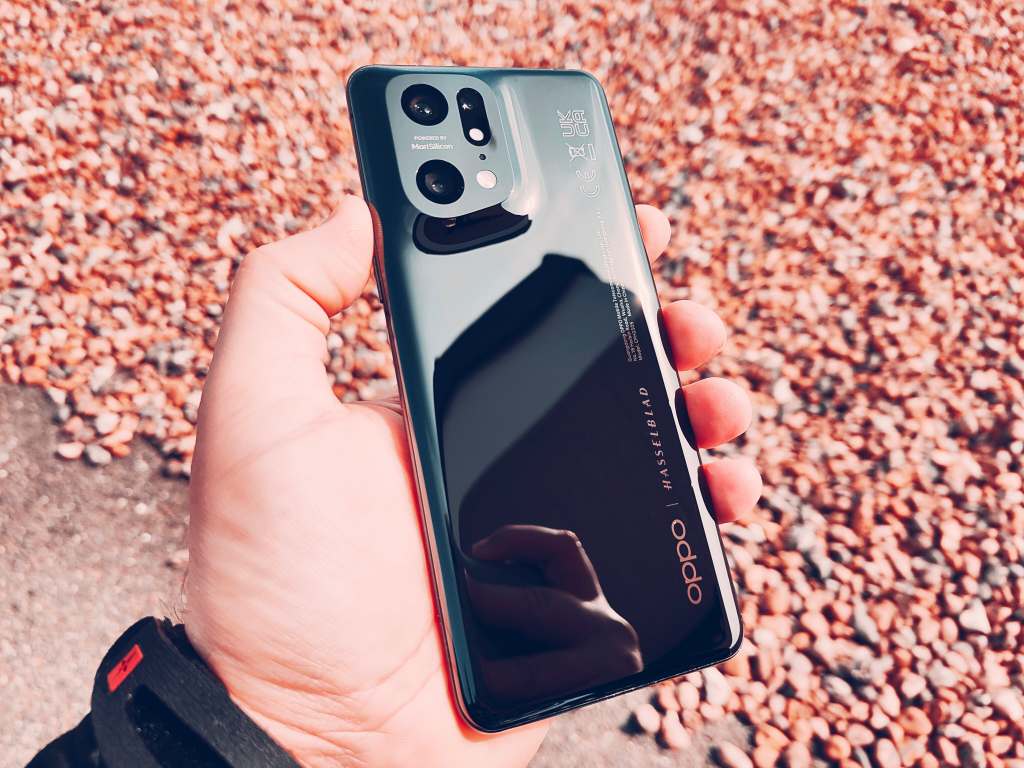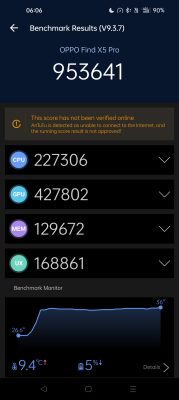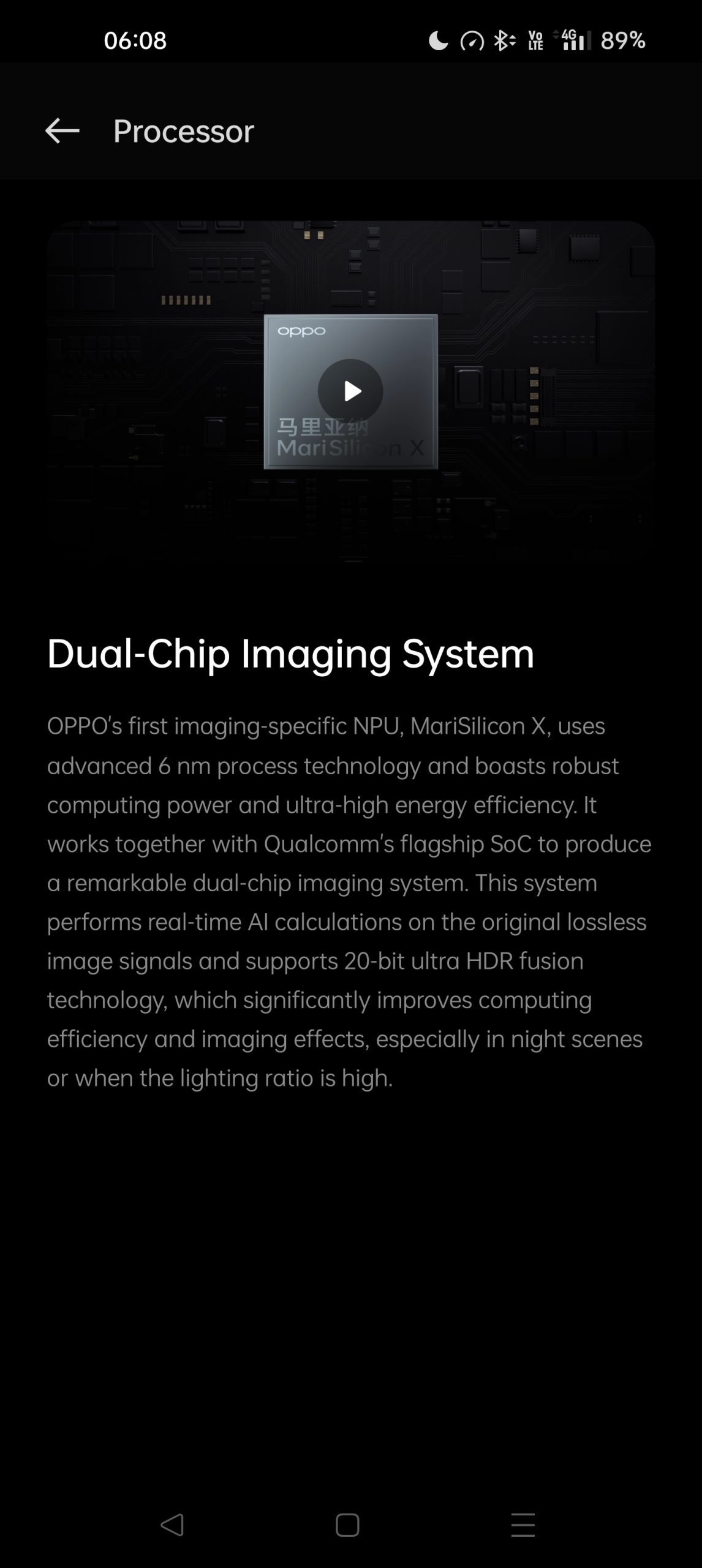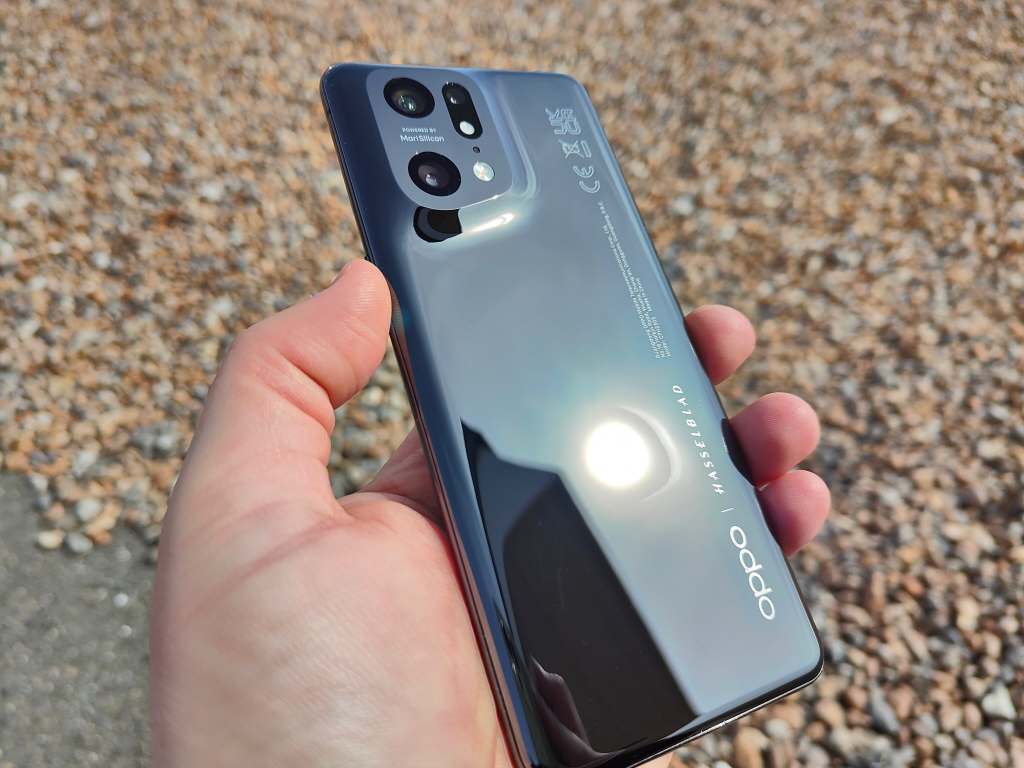
Oppo Find X5 Pro Review: Oppo’s flagship has more than just one plus, thanks to Hasselblad alliance and custom imaging chip
Oppo Find X5 Pro
£1049Pros
- Incredible screen quality, with great brightness and vivid colours
- MariSilicon X chip gives camera a real boost with many different modes to get most from the three cameras
- Fast charging, wired or wireless
- Good battery life without need to turn off advanced features on offer
Cons
- Telephoto camera is just 2x and image quality tails off after 5x zoom
- Supplied case is a little boring, given price
- Phone is not cheap and other BBK models have some similar features for less money
Oppo’s top phone in 2022, foldable excepted, is cheaper than last year’s flagship – but the Find X5 Pro has just the right number of enhancements to make it a serious player.

The Oppo Find X5 Pro sees the addition of Hasselblad co-branding, meaning the Swedish camera maker is no longer exclusively working with OnePlus, another brand under the BBK Electronics umbrella.
OnePlus is now in its second year of collaboration with Hasselblad, but this is the first year for Oppo. Unlike the OnePlus 10 Pro recently launched, or it’s 9 series predecessors, the Find X5 and Find X5 Pro (the phone reviewed here) get Oppo’s very own-produced custom silicon to improve camera image and video processing.
It’s primarily this chip that will have Oppo hoping you’ll be prepared to shell out over a grand on it, but there are many other interesting features and design elements that all contribute to the overall package.
Design & Build
Visually there are a number of similarities between this year’s Find X5 Pro and last year’s Find X3 Pro. Oppo might state that ‘if it ain’t broke….’, which is probably a valid point – but look a bit closer and there are some subtle changes to the camera layout on the back.
For one thing, the 3-megapixel ‘microscope’ camera has gone. Should you still yearn for it, you’ll either need to go for a Find X3 Pro (if you can still find one), or look at Realme’s GT 2 Pro.

The phone still has the smoothest camera hump on any phone, with the bundled case fitting over and around it like a glove, but Oppo supplies an opaque case that also hides pretty much everything.
The Glaze Black version (as reviewed) is surprisingly resistant to fingerprints, but even so you’ll probably want to fit the case to protect your investment – at least initially. Later you might wish to purchase a third-party case, like a transparent one, so you can show the phone off in all its glory.
As usual, Amazon (or AliExpress) are full of £10-20 cases, and Oppo also offers a kevlar case for around £50, which is also non-transparent.

There are loud stereo speakers, a dual-SIM tray at the base of the phone, USB-C port, two volume keys, power button and an in-glass fingerprint sensor. The phone comes with a factory-fitted screen protector too, and there’s IP68 for dust and water protection.
It basically ticks all the boxes.
Despite the loss of the microlens, Oppo hasn’t used this space to include a powerful zoom lens that featured on the Find X2 Pro, and was also omitted from the Find X3 Pro. It’s a shame to see it left out.
Rumours have circulated that there might be a future Pro+ or Ultra model, but Oppo informed me at a recent event that there are no other Find X5 series phones planned for launch in the UK this year. Make of that what you will, as obviously plans could change.
One of the many reasons the Find X5 Pro can demand its premium price is all the combined premium features, like its powerful chipset (and custom silicon), advanced charging technology, and high-end cameras (more on all of these later), plus an incredibly bright display with tiny bezels on all four sides.

Display
The 6.7-inch display has a resolution of 1440×3216 pixels, along with 10-bit (1+ billion colours) and LTPO 2.0 that offers a dynamic refresh rate that can go as low as 1Hz and up to 120Hz. There’s Gorilla Glass Victus to protect the screen, and a peak brightness of 1300 nits (in normal use, the default brightness is a more modest 500 nits).
It’s easily viewable in bright sunlight, and I was quite happy to see that it didn’t need to max out to be visible – helping reduce the impact on the battery. The phone has over 8,000 brightness levels and like some other BBK phones, the auto-brightness setting does sometimes like to turn things down perhaps a smidgeon too much. It’s easily adjusted in the settings.

Camera
It’s fair to say that it’s now quite hard to find a phone that can’t take decent photos in good conditions, but Oppo has taken things a bit further by developing its own custom MariSilicon X chip that speeds up image processing, and offers a significant improvement to low-light photography, including video recording – even at 4K.
I recently tested the Find X5 Pro in the dark, including 4K video recording. Indeed, video recording on the Find X5 Pro is excellent all-round, capturing clear and smooth video (with HDR and LOG support in the dedicated Film mode) at up to 60fps. There’s no 8K recording mode, possibly on account of the MariSilicon X not being designed for that resolution. You can expect Oppo to continue development in this area, so it might give a hint of what is to come in next year’s flagship – although most consumers probably have little need for 8K video recording anytime soon.
Hasselblad has come along to tune the colours, giving more lifelike exposures, along with a series of filters and its famous ‘XPan’ panoramic mode, to give a more unique look to photos. There’s also a professional mode to allow every aspect to be controlled, including 10-bit colour capture in both normal and night modes.

So if the microscope has gone and there’s no periscope zoom for Galaxy S22 Ultra-like zoom levels, what does the Find X5 Pro actually have for camera sensors?
There are three cameras, consisting of:
- 50-megapixel primary camera (Sony IMX766), f/1.7 (FoV 80-degrees), with dual-OIS and 5-axis stabilisation
- 50-megapixel ultra-wide camera (Sony IMX766), f/2.2 (FoV 110.3-degrees), with 4cm macro mode
- 13-megapixel telephoto camera (unknown sensor), f/2.4 (FoV 45-degrees)
Plus, on the front a 32-megapixel f/2.4 fixed-focus selfie camera
In my time with the phone, I’ve been able to effortless get great shots and the only thing missing is the zoom capability, which at 2x from the 13-megapixel telephoto camera is really limited to a maximum of 5x with the hybrid zoom option.
Anything more than this (and the phone only goes up to a maximum of 20x in any case) starts to give you photos that look like oil paintings if looked at on anything other than the phone display.
You might be able to get away with 10x for sharing on social media or IM, but forget about any sort of serious usage.
Nevertheless, with 0.6-5x zoom on offer, most people are going to get along just fine with what the Find X5 Pro does offer, and not worry about what it doesn’t. Not everyone wants to be able to zoom into another time zone, or get close-ups of the moon.
One of the best aspects is the speed of the camera, thanks to that dedicated chip, and the overall camera experience is great – inspiring confidence when you just want to point and shoot. Its low-light capability makes it a great phone for a night out also.
Photo Gallery




























































Performance & Battery

AnTuTu v9 Score 953,641
Thanks to Qualcomm’s Snapdragon 8 Gen 1 chip, you won’t find a more powerful processor out there right now, and the phone comes with an impressive AnTuTu v9 benchmark score of 953,641.
The phone has 5G (with support for multiple 4G and 5G carrier aggregation as recently tested by EE), along with Wi-Fi 6, Bluetooth 5.2, and it comes with Color OS 12.1, based on Android 12.
There are two nano SIM slots, as well as eSIM support – although you cannot use one of the SIM slots if you activate the eSIM.
RAM and storage wise, you get 12GB of physical RAM with up to 7GB of virtual RAM, and 256GB of UFS 3.1 storage. In the UK there’s just this configuration, so no cheaper 128GB model, and certainly no 512GB option as was available with the Find X2 Pro.
There’s no memory expansion either, but 256GB has for some time been considered the sweet spot that almost everyone can live with. If you mostly stream content and backup your photos and video in the cloud (something everyone should do in case the phone is lost or stolen) then you may never come close to filling the phone storage.
I have the power
To keep you able to enjoy the phone features for as long as possible, the Find X5 Pro has a 5,000mAh battery that can be charged at 80W with the supplied-in-the-box wired charger (reaching a 50% charge from zero in 12 minutes, and 100% in under 30 minutes), or at 50W with the optional wireless charger that gets from 0-100% in 47 minutes.




While 80W is incredibly fast, you may have seen other smartphones offering 100W or more (Oppo recently showed off 240W on a concept phone and Realme is about to offer 150W on the GT Neo 3) but it is worth noting that these rapid chargers drop their output relatively quickly as the phone charges up, and assuming you’ll usually charge when the battery gets low (rather than charging it from totally dead) the real-world gains may not vary that much.
Rather than this being a negative, it’s more a testament to how advanced Oppo, as well as OnePlus and Realme, phones have been with charging technology for a number of years.
And what of the actual battery life, given the powerful chipset and that bright display? Well, it will do you well as long as you’re not using the camera too heavily. Taking photos seems to have a noticeable impact, but even then four to five hours of screen-on-time is achievable, which isn’t as high as some phones can manage, but these times were without any of the premium features disabled.
If you’re paying over £1000 you shouldn’t need to turn things off (effectively turning the phone into a £300 mid-ranger) to get a decent amount of battery.
However, if you do want and need to go for longer usage between charges (despite the speed of recharging on offer), you can opt to enable a large range of power saving options, like dropping the screen refresh rate and turning off background data. You can also enable Smart 5G mode to further save power, or turn it off entirely if you don’t get have 5G service around you (or a 5G plan).

Overall
The Find X5 Pro is not cheap, and as such you’ll need to carefully consider whether you want or need the advanced features on offer.
It is a fantastic phone without a doubt, but some cheaper models made by the same parent company can offer a similar package – such as the Realme GT 2 Pro, which is £350 less, but has the same primary camera and even an almost identical user interface (Realme UI being a clone of ColorOS).
What the Realme doesn’t get is a curved display (but some might prefer a flat display), an IP-rating, faster charging, a telephoto camera at all, or a custom imaging chip – but there is a lot of money to be saved if any or all of those things are non-essential.
If you’re not put off by its price, or can soak up the premium over a two or three year handset contract, you certainly won’t be disappointed and the only thing you’ll probably fuss over is what case to use with it.

Key Specifications
| Oppo Find X5 Pro | |
| Size/Weight | 163.7 x 73.9 x 8.5mm (195g) |
| Screen | 6.7-inch 1440×3216 pixels AMOLED 1-120Hz HDR10+ / 10-bit colour (1+bn colours) 1300nits Peak brightness Gorilla Glass Victus |
| Audio | Dolby Atmos Stereo Sound |
| Chipset | Qualcomm Snapdragon 8 Gen 1 (4nm) Max freq 3GHz Adreno 730 GPU |
| RAM | 12GB LPDDR5 Quad Channel (plus virtual memory, up to 7GB) |
| Storage | 256GB UFS 3.1 |
| Camera (front) | Punch-hole 32MP Fixed Focus (f/2.4) Video: 1080p 30fps with EIS |
| Camera (rear) | Primary: 50MP (f/1.7) Sony IMX766 with OIS + 5-axis stabilisation Ultra-wide: 50MP (f/2.2) (110.3-degree FoV) Telephoto: 13MP (f/2.4) Video: 4K/60 with EIS MariSilicon X custom silicon for faster image processing and low-light enhancement |
| Connectivity | Dual band Wi-Fi 6 (802.11ax) 5G NR (SA & NSA) Sub 6 4G+ with VoLTE, ViLTE and VoWiFi Bluetooth 5.2 LE NFC USB-C |
| Battery | 5,000mAh 80W fast-charging (wired, and supplied in box) 50W wired-charging (charger sold separately) |
| Other | Protective case Factory fitted screen protector Dual SIM (Dual Standby) ColorOS 12.1 built on Android 12 Three years of OS updates + Four years of security updates |
| Price | £1049 (12+256GB) in Glaze Black or Ceramic White |
More information
Disclosure: Oppo provided a review sample on loan. The company had no input in the content of the review, nor did the company see the review before it was published.


8 thoughts on “Oppo Find X5 Pro Review: Oppo’s flagship has more than just one plus, thanks to Hasselblad alliance and custom imaging chip”